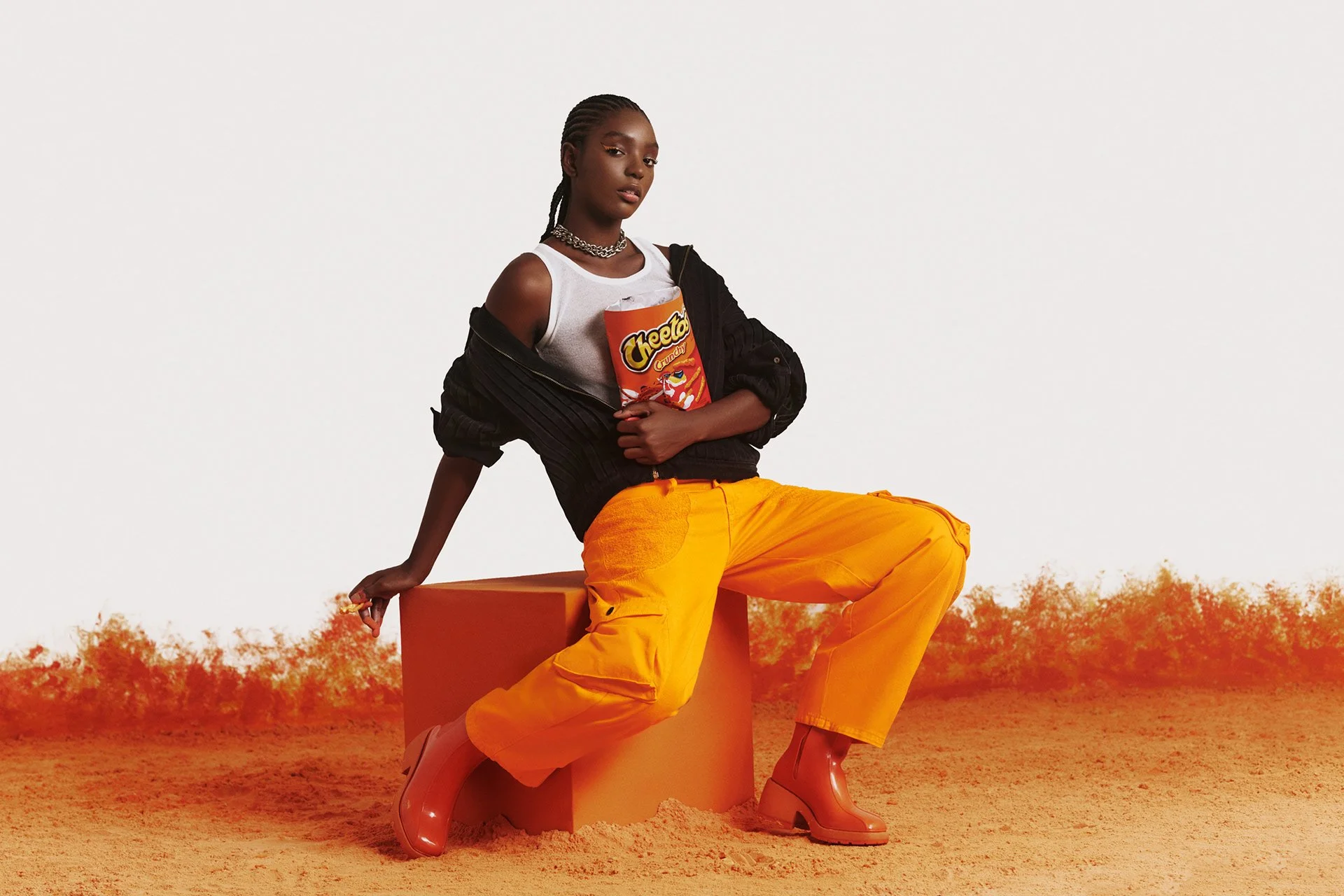Cheetos Dust Pants
The Genius of Turning a Flaw into a Feature
Have you ever wondered what to do with the irresistible orange dust left on your fingers after eating Cheetos? Cheetos finally has an answer: Cheetos Pants. In a bold and witty move, the snack giant launched a limited-edition collection of bright orange pants designed to handle the “cheetle” — the brand’s official name for the cheesy residue — with a special towel-like texture.
This campaign is a brilliant response to a universal problem every Cheetos lover knows. Instead of hiding the mess, Cheetos embraced it, turning a snack-time inconvenience into a high-fashion statement. The campaign playfully rebranded the dust as “Cheetle” and positioned the pants as “Dust-Haves,” a clever twist on “Must-Haves.” The pants feature towel-textured thigh patches and a large front pocket — perfect for wiping your fingers clean without shame.
The campaign went viral, drawing 150,000+ unique visitors to its website and selling out in record time. It transformed something trivial — orange-stained fingers — into a cultural talking point and a new brand asset. This wasn’t just about selling pants; it was about celebrating the messy joy of eating Cheetos.
Why this strategy?
Solving a Universal Problem
Cheetos identified a shared consumer pain point and turned it into a relatable, humorous solution. That empathy built connection, community, and brand love.Turning a Negative into a Positive
The orange dust — once a minor flaw — became a symbol of authenticity and enjoyment. It’s a masterclass in reverse branding, showing that sometimes the best way to own your weakness is to make it your signature.A Masterclass in Earned Media
The absurdity of the idea made it instantly shareable. By creating something both funny and desirable, Cheetos generated massive organic buzz, turning a simple drop into a cultural moment far louder than any paid campaign.
My Comment
I love how Cheetos took a mess and turned it into a message. They didn’t try to clean up the problem — they celebrated it. It’s a reminder that sometimes the most powerful branding isn’t about perfection, but about owning your imperfections. For marketers, this is a beautiful lesson: don’t just sell a product, sell the whole experience — mess and all.









